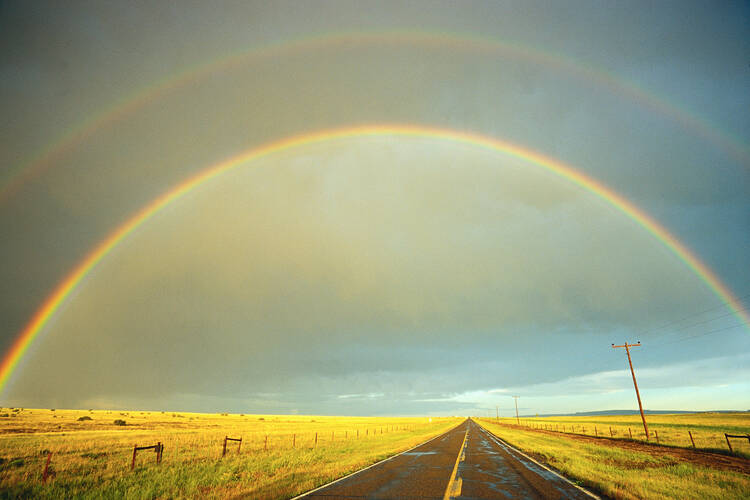Last fall, I drove out to western Kansas for a funeral Mass, going to a place I have been before, but, departing from a new locale. I decided to take Kansas Highway 4. It is not a road I know well, but, in Rush County, it passes the former farmsteads of both my grandfathers, and it goes right by the Rush County Fairgrounds, my childhood’s version of Disneyland.
On the drive, I realized that I had never taken Highway 4 further west than Rush County. I am at an age where such a realization arrives as an addition to a bucket list, one admittedly quite small. So, I decided to stay on Highway 4, rather than to jog down to my well-known Highway 96.
I have not had a map or atlas in the car for years, not since the arrival of Liza, my GPS confrere. Try buying a map roadside! They’ve disappeared. Liza was happy to put me onto Highway 4, but I could not figure out how to see where it went. Did it go all the way to the Colorado line? Liza was always focused upon the next turn. I could make her map large enough to take in the North American continent, but she wouldn’t let me see much beyond my own location, not what lay ahead or behind.
This is an issue I have with the Gospels as well. We only see, and know, the characters as their lives intersect with that of Jesus. We do not hear what brought them to the Son of Man, or where they went from there. On the Solemnity of the Epiphany, we meet the three magi, who “saw his star at its arising” and who “have come to do him homage” (Mt 2:2).
Here is what I want to know: What made them stargazers? What happened in their lives to set their eyes upon the heavens? What made them seekers?
You see, knowledge is more than taking a look. We don’t just see everything there is to see. We see what we are looking for, what we begin to expect or long for. If you are not sure that’s true, think of all the times in life you have found yourself noticing something, or someone, who had been there all along. Something had to happen to you before you were ready to see.
That is why we speak of eyes of faith, of being able to see things in the world that others can—and quite vigorously—insist are just not there. Things like beauty, or love, or God, who is the source of both. This is why atheists are so frustrated at us, in an anal retentive way. They look in the same direction and insist, “There’s nothing there.” What they don’t do is look in the same way.
So what made the magi into people who could see? People who knew how to look? Was it some wound in their lives? Our myths are full of stories about life-giving wounds, sorrows that birth new sights, new worlds. But there is also the hand of God, which we call grace. Why do some people see more after a sorrow? And why, in the face of sadness, do others close-in, even tighter upon their own selves, into their myopic, self-centered frame of reference?
And sorrow is not the only thing that can raise our eyes to the stars. Perhaps life simply wooed the magi with its beauty, filling their hearts with gratitude for someone they did not yet know. St. Thérèse of Lisieux was like that, falling in love with her savior and his kingdom while still a child.
Either way, Epiphany, “the shining forth” reminds us that Christmas is for eyes of faith. We are not born with those. They are the gift of grace.
Highway 4 kept jogging north, by a mile or two, generously picking up every small town or grain elevator. Liza would tell me to turn, but I began to fret that I would eventually hit Interstate 70, far to the north of my destination. I decided to turn around by using a farm road, which, about a hundred yards from the highway, turned to intractable mud. I spent 10 minutes unable to move in any direction, covering my little white car in mud. When I regained the highway, I gave it my trust. I would wait and see where it led.
Readings: Isaiah 60: 1-6 Ephesians 3: 2-3a, 5-6 Matthew 2: 1-12








